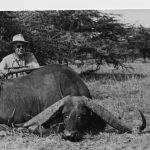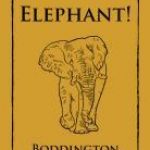Collecting great hunting books is an enjoyable way to further your appreciation of the hunting tradition.
Like many hunters, I was fascinated with sporting literature from a very young age. Great works of hunting literature such as Ruark’s Horn of the Hunter and Capstick’s Death in the Long Grass provided hours of enjoyment and offered an opportunity to share in experiences that I was sure I would never get to experience first-hand. For many of us, books like these inspired dreams of adventure in far-off lands.
I still have my copies of those books as well as many others, and I still venture back to those exotic places through their pages. Over the course of the last century, some of the greatest hunters and literary figures have chronicled their lives in the field, and today we are fortunate that many of these texts still exist. From Theodore Roosevelt’s African Game Trails to Jim Corbett’s Man-Eaters of Kumaon and J. A. Hunter’s Hunter, these works serve as a unique historical collection of sporting literature and a glimpse into the lives of famous hunters from a bygone era.
Today, there is a robust market for classic works of sporting literature, and some of the earliest editions of these classic titles are worth a great deal of money. The works of authors like Hunter and Corbett, along with Russell Annabel, Archibald Rutledge, Jack O’Connor, and a host of other famous names in sporting literature, command a high price among collectors. Finding these works of classic literature can be difficult, but like the search for Hemingway’s kudu in The Green Hills of Africa, the pursuit is part of the experience.
Great hunting books provide hours of enjoyment during the times you can’t be out in the field.
According to Ludo Wurfbain, owner of Safari Press and publisher of Sports Afield, it is still possible to find these books in secondhand bookstores around the country. But, as with the hunting landscape, times have changed, and the competition from large online markets has resulted in a reduction in the number of such bookstores. The odds are getting slimmer that you’ll stumble upon one of the great works of the world’s most famous sporting authors collecting dust on store shelves. The rise in online bookstores, however, has made these classic books more accessible, and if you’re simply looking for a copy of a long-lost classic to read for your own enjoyment, online bookstores provide a simple and affordable option.
“If you’re looking for a reading copy, Ebay, Amazon, Good Reads, and other online marketplaces will likely have the books you seek,” said Wurfbain. But, he warns, these outlets aren’t always the best place to purchase collectible books. That’s because sometimes the high value of collectible first editions prompts sellers to overstate the condition of the book, and the authenticity of the work may be questionable.
“Collectible books may sometimes be sold with fake pages, they may have pages removed, or they may not be in good condition,” Wurfbain says. “But reprints and reading copies are usually fine.” If you’re purchasing a book simply for entertainment, these online stores make the master works of sporting literature accessible and easy-to-find, and often you’ll have a copy of the book you want in a few days. The search for collectible books is more complex. There are only a few copies of the most desirable first editions, and these works command a high price among collectors.
“Condition is everything,” says Wurfbain. The most valuable works will be first editions that are in prime condition and have a jacket, and they are worth a premium. Some of the classic editions have watermarks that verify their authenticity, and this adds to the value. Signed copies from the most notable authors will cost even more, and these books will be rare treasures that are hard to locate. But for the collector, that’s all part of the process, and adding a vintage classic to the bookshelf in your trophy room is a special event.
Most hunters can only name a handful of titles that have been published on hunting, but in a 2004 journal article Wurfbain noted that there have been approximately 4,800 English-language titles published on hunting over the last two centuries. The bulk of those titles, as one might expect, were written on the topic of North American hunting (about 1,600). Europe was the second-most-popular destination for English-language sporting authors, and until 2004 there had been approximately 1,300 titles written on the subject.
Asian hunting has been the topic of about 1,000 works, but there have been very few titles published since 1970 that were devoted to hunting in Asia, primarily a result of the closing of much of the continent’s most famous hunting grounds. Corbett and Kenneth Anderson wrote eloquent and popular works on their time hunting man-eaters in India, but that country has since closed to hunting and although there is still plenty of opportunity for hunting across the continent of Asia, very little modern writing focuses on that topic.
Africa, despite its popularity as a hunting destination and the famous titles devoted to the pursuit of game on that continent, ranks fourth, with 850 titles published on the topic. There have been books written on hunting in other locations such as the South Pacific and Central and South America, but those works are far fewer in number than the titles that have been devoted to the four destinations listed above.
With so many texts on so many different subjects, it would require a lifetime commitment to collect even a sizable portion of world’s sporting literature. The topics and destinations are diverse, as is the writing style and quality, but there are plenty of great works on hunting to keep even the most ardent reader busy when they’re not in the field. Deciding which works you’ll seek out and add to your collection is largely a matter of personal taste, and often the best resource is other hunters who appreciate sporting literature.
“You will often hear other hunters recommend books,” Wurbain says. “Someone will ask, ‘Have you ever read Horn of the Hunter by Ruark?’ Authors will often mention other books in their own writings, and members of your hunting or shooting club may offer suggestions on the books they’ve read.”
Wurfbain has his own personal collection of favorites, a list of some of the greatest works ever written on the subject of hunting. Among his personal picks are Hunting and Fishing in Alaska by Russell Annabel, Gene Hill’s Sunlight and Shadows, and the works of Archibald Rutledge and Jack O’Connor. In African hunting literature, he suggests Capstick’s Death in the Long Grass, Ruark’s Horn of the Hunter, Karamojo Safari by W.D.M. Bell, and J.A. Hunter’s timeless autobiography Hunter. Of the classic books on Asian hunting, he suggests Corbett’s Man-Eaters of Kumaon and The Man-Eating Leopard of Rudraprayag.
For those who are seeking out reading copies of these books, most of them are widely available at reasonable prices. If you’re a serious collector, though, getting your hands on the title you want in good condition can be a difficult and sometimes costly task. With some first editions fetching upwards of twenty thousand dollars, the rarified market for highly collectible works is limited. But it’s a very special experience to hold a signed original copy of one of the master works in your hand. In addition, books are an easily hidden investment.
“A robber might come in your house and steal your flat screen television and your coffee maker off the kitchen counter, but they’ll walk right by your signed first edition of Hunter that is worth five thousand dollars,” said Wurfbain. “There aren’t ten criminals in the world that know what that book is worth.”
Classic hunting books are a sound investment, and they should be treated as such if you’re a serious collector. By and large, books don’t require special care, and as long as they are placed flat or standing upright and aren’t exposed to direct sunlight and insects, they’ll generally maintain their condition. There are, however, some important considerations with regard to collectible books. They should never be written on or in, and pages obviously should not be torn or dog-eared. One of the greatest risks to the pages of classic books is acidification, which results when acids from other objects such as newspaper clippings or photographs bleed onto the pages of a book, so never store anything in a collectible book. And be careful who you allow to handle your collection.
“You don’t want your grandkids thumbing through the book with dirty hands or kicking your mint-condition originals around the trophy room like soccer balls,” said Wurfbain.
Wurfbain suggests that book collections be protected on a rider on your homeowner’s insurance if the investment is very large. Usually, he says, riders on existing policies are relatively inexpensive and offer peace of mind against loss or damage.
Whether you’re collecting reading-copy hunting books for entertainment or amassing a valuable library of the world’s finest hunting literature, there are thousands of titles available to occupy your time. Those of us who appreciate the thrill of the hunt and great writing are fortunate that hunters past have taken the time to record their experiences for us to share. Many of us will never have the opportunity to hunt in the places that they describe, and in some instances the hunts described are a thing of the past, but owning a collection of sporting literature ensures that, on any given afternoon, we can escape into the wild and relive some of the greatest hunting stories ever told.












